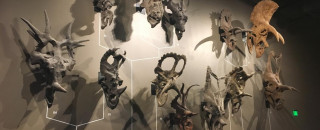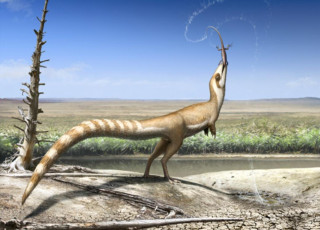Top Dinosaur Discoveries of the Decade
By Riley Black
There’s never been a better time for dinosaur science. A new species of dinosaur is named just about every two weeks, with each year bringing dozens of new analyses on how the “terrible lizards” moved, ate their food, shook their feathers, and were related to each other. Any complete list of the decade’s dinosaur discoveries would fill a book, but here are some of the most stunning finds of the 2010s.

1. Asilisaurus and the Origin of Dinosaurs
The first rock star on our list isn’t technically a dinosaur, but it was close. That’s what made it so important. Named in 2010 from fossils found in Tanzania, Asilisaurus is a lanky reptile belonging to a recently-named group of reptiles called silesaurids. Along with other specimens, Asilisaurus stepped forward as one of the closest relatives to the earliest dinosaurs – therefore giving researchers are more refined look at what dinosaur ancestors were like. Additional finds have helped strengthen the connection. Nyasasaurus, named in 2013, resembles both animals like Asilisaurus and the earliest known dinosaurs.

2. The Biggest Dinosaur?
What was the largest dinosaur of all time? There have been many contenders over the years – Brachiosaurus, Supersaurus, “Seismosaurus,” Argentinosaurus, and more. But the current front runner is Patagotitan. Found in 2008, and named in 2017, this enormous herbivore belonged to a dinosaur subgroup called titanosaurs. Many were giants, but Patagotitan was among the largest of all. Size estimates for the dinosaur exceed 120 feet and more than 75 tons. Additional fossils will be needed to know whether this dinosaur truly is the largest ever known, but its arrival on the paleontological scene certainly caused a stir.

3. Dinosaurs Expand Their Horn Section
The past decade has been fantastic for horned dinosaurs. Paleontologists have named over a dozen new species, from the tiny Aquilops to multi-horned giants such as Xenoceratops. A handful of classic ceratopsians has blossomed into a branching array of fantastically-ornamented dinosaurs, and Utah has made a significant contribution to the total. Diabloceratops, Utahceratops, Kosmoceratops, Nasutoceratops, and Machairoceratops are all unique Utah dinosaurs named in the last decade.
4. Dinosaur Tail in Amber
It’s hard to ignore a find that keeps popping up on social media after its debut. In 2018 researchers announced the discovery of a dinosaur tail preserved in amber. The isolated piece of saurian anatomy was covered in feathers, providing a detailed view of what the rear of this dinosaur looked like, but the find also signaled something else. Along with other finds – such as a baby bird preserved in amber – the discovery hints that additional amber discoveries may offer unprecedented windows into the heyday of the dinosaurs.
5. Armor, In Depth
Speaking of exceptional preservation, the first known fossil of Borealopelta is one of the most spectacular dinosaurs ever found. The fossil represents a large portion of an armored dinosaur, including the head, neck, and front portion of the body. The fossil is so well-preserved that every armor piece is in place, the keratin covering of the spiky armor preserved as well as the bone. It’s about as close a look as we’re likely to get at an armored dinosaur.
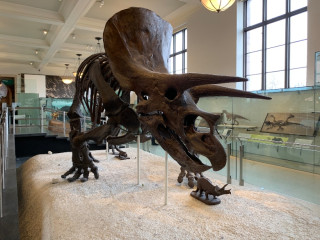
6. We’ve Named Too Many Dinosaurs
Paleontology is always revising itself with each new discovery. And one of the most important points in the past decade has been that many dinosaurs that were thought to be unique species are really the growth stages of others. The enormous hadrosaur “Anatotitan,” for example, is a fully-grown Edmontosaurus, and the carnivore “Nanotyrannus” is a juvenile Tyrannosaurus. Not that all the debates are settled. Paleontologists still disagree about whether the horned dinosaur Torosaurus is the mature form of Triceratops, for example, but the discussion underscores our growing knowledge of dinosaurs that grew, changed, and really lived.
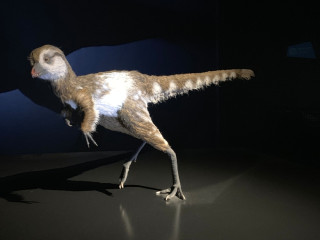
7. Dinosaurs Get Fluffy
Paleontologists have known that many non-avian dinosaurs had plumage since the mid-1990s, but the past decade has seen the expansion of fuzziness to even more branches of the dinosaur family tree. Dinosaurs that were previously envisioned as scaly – like Ornithomimus – have been found with evidence of feathers. Other dinosaurs, such as the herbivore Kulindadromeus, have shown that fuzz, filaments, and bristles might have been a common dinosaur feature. It’s no longer controversial to envision many dinosaurs as both scaly and feathery. The discovery that the fuzz of flying reptiles called pterosaurs is equivalent to the protofeathers of dinosaurs is another part of the puzzle, hinting that the Age of Reptiles was fluffier than anyone expected.
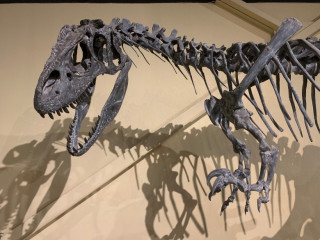
8. Walk the Dinosaur
Not all dinosaur discoveries are about bones. Tracks and trace fossils are important, too. Consider scratch marks made by multiple dinosaurs close together in Colorado. These seem similar to the markings made by some modern birds when they court, and may preserve some of the only evidence we have of dinosaur courting behavior.
9. Deinocheirus
No list of the biggest dinosaur discoveries of the decade would be complete without mentioning Deinocheirus. This dinosaur was named in 1970 from a set of enormous arms. It was thought that the rest of the animal was lost. Decade after decade, no one found another. But then an additional two skeletons were uncovered, although some fossil rescue work was required to recover one of the skulls that had wound up on the black market. In the end, the bones revealed an animal far stranger than paleontologists ever expected – an enormous “ostrich mimic” dinosaur with a sail on its back and a shovel-like face. Paleontologists who grew up wondering what the rest of the animal looked like were overjoyed.
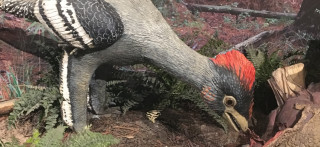
10. A Dinosaur of a Different Color
What color were dinosaurs? Paleontologists used to say “We don’t know.” Finding dinosaur skin impressions was hard enough, and these scraps didn’t reveal what hues dinosaurs wore. But paleontologists found a way. Feathers were the key. Microscopic, pigment-carrying blobs called melanosomes help create colors – black, gray, white, rust red, and iridescent sheens – and can be observed in modern feathers. By comparing fossil dinosaur feathers to modern feathers, paleontologists can discern dinosaur colors. The small, raptor-like dinosaur Anchiornis, for one, was black and white like a magpie with a splash of red atop its head. The methodology can be used on other fossils that preserve melanosomes, too. The armored Borealopelta, mentioned higher up on our list, was red above and lighter below. Research into this area continues, but the findings allow us to envision the Mesozoic world with greater clarity than ever before. Bone by bone and study by study, science and imagination are bringing dinosaurs back to life.
Riley Black is the author of Skeleton Keys, My Beloved Brontosaurus, Prehistoric Predators, and a science writer for the Natural History Museum of Utah, a part of the University of Utah in Salt Lake City. Our mission is to illuminate the natural world and the place of humans within it. In addition to housing outstanding exhibits for the public, NHMU is a research museum. Learn more.
